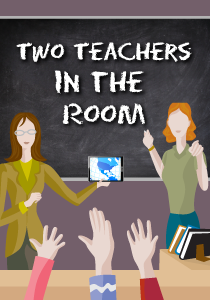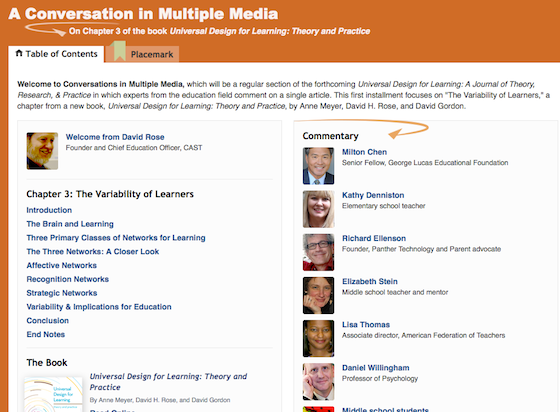Let’s Move Past the Myth of the Average Learner
A MiddleWeb Blog

Students end up being placed along a bell curve (hope this doesn’t induce a headache) to decipher how on target they are—how close to the “average” learner. And this is deciphered basically by looking at their test scores…then placing them along this line of doom.
But never fear: there’s really nothing to worry about: if the student does not fall smack into the “average” zone of bliss, they have the chance to fall two standard deviations above or below and still be considered “average.”
Some will argue that this model does have its positives—namely, it provides educators with a way to communicate about the strengths and needs of students. And it does organize certain information that educators need to help provide students with best practices to meet their needs.
But if we dig a little deeper, what’s the point? We know good teaching is good teaching. Do we really need to focus on a dot on a line to see that our student is spot-on the “average” or somewhere off the mark? It becomes such a negative tool to view learner “weakness.” It can become a self-fulfilling prophecy for students who are constantly reminded of their weakest skills. How can we move past this?
Busting up the myth of the average
Once again, the Universal Design for Learning comes to the rescue. For starters, check out this quick clip (above) presented by Harvard professor Todd Rose to learn the basics of the myth of the average learner. You can hear Todd speak in more depth about Project Variability and the dangers of “averaging” learners in this Sonoma County TEDx talk.
What we come to understand is that this should not be an matter of designating “average” learners, but of gaining the awareness we need to recognize learner variability. It’s a mind-opening activity that needs to take place in every inclusion classroom. In every seat, we have students who have variability—and students with disabilities are just a part of that variability. Makes great sense, don’t you think?
The way we view our students goes a long way in determining how we plan and implement effective teaching and learning practices. In most public school classrooms, you’ll find a large group of students with diverse needs. In any inclusion classroom, you will find the additional challenge of meeting the needs of students with disabilities within that large group. So how can successful learning take place?
Check out or revisit this link to a past post about how this successful learning can take place when teachers chisel a teaching masterpiece with the tool of Universal Design for Learning (UDL). Since I wrote that piece, my work with UDL has deepened in understanding and in classroom application. I have been organizing and presenting some UDL professional development opportunities in my district to raise awareness that there is a natural link to addressing the needs of all learners in our classrooms within the context of the Common Core. I am taking strategic steps to connect my own passion with my work with my colleagues.
My work outside of my classroom continues to propel me forward and also goes a long way in keeping me focused on my desired path—a path that I must create as I strive to work with colleagues to kick up the consistency and level of instruction in inclusion settings.
A great new UDL resource!
The research and resources to support the thinking and application of UDL continue to increase. Here’s a new online book, Universal Design for Learning: Theory and Practice (by Anne Meyer, David H. Rose and David Gordon) that shares new research and clear strategies, all supporting the fact that our students are more than a dot along a bell curve. Our students are individuals who deserve to be given the opportunity to construct meaning during rich classroom learning. You can order the book here, if you would like a hard copy. Or you may read the entire book online by creating a free login.
But before you begin digging into the text, check out this link and read the variety of rich perspectives around Chapter 3 in the book, “The Variability of Learners.” I am honored to be one of the reviewers for this chapter. It was a privilege to be part of this group, and I am thankful for the opportunity to share my thinking around what learner variability means to me —and ultimately my students.
I hope this material encourages you to explore the whole book and gets you thinking about what learner variability means to you and your students. Take some time, read through the various perspectives—and come back and tell us:
What does learner variability mean to you? How can the knowledge of learner variability transform your teaching practices and support student achievement?




































Hi Elizabeth. I just wanted to let you know that I really appreciate your work. It is good to know that a teacher with as much experience as you has similar frustrations as myself, a third year special education teacher who has taught both the multi-need population and now currently the behavior intensive population. When I was a multineed special educator, I dreaded the part of the IEP meeting where a parent would have to be told (likely for the hundredth time,) that their child was significantly disabled and/ or fell at least two standard deviations below “average.” I love your concept of recognizing “learner variability.”